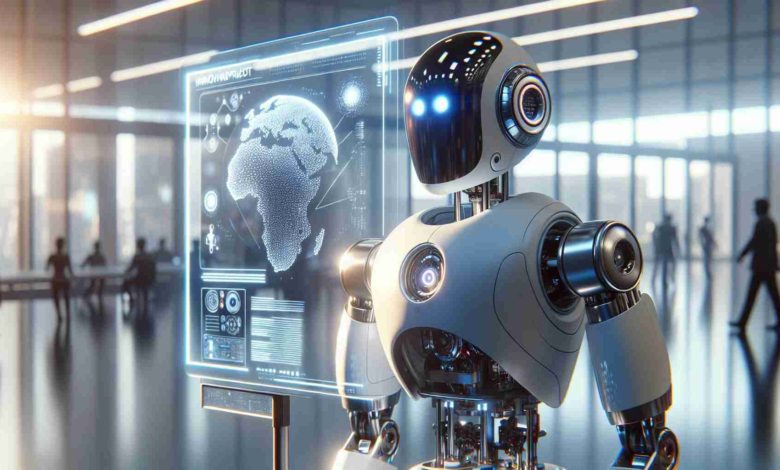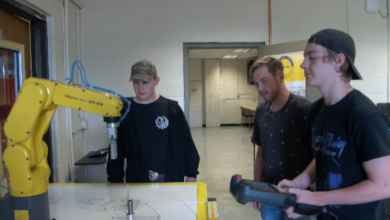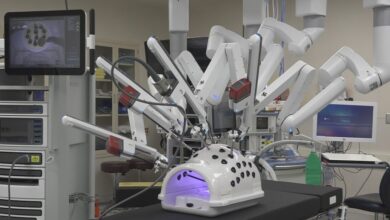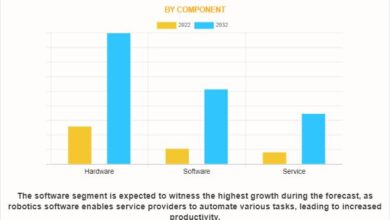Columbia Engineering’s Innovative Emo Robot

As research in robotics advances, highly agile robots without faces dominate the landscape of mechanical innovation. Yet, there’s a significant leap forward with the introduction of Emo, a new robot by Columbia Engineering capable of mimicking human expressions. This remarkable foray into human-robot interaction reveals a robot that not only understands human facial movements but can replicate them in real-time, heralding a new era of emotionally intelligent machines.
Emo differs from its peers by focusing on the subtleties of facial expression rather than physical dexterity. Featuring a face designed to communicate and interact through expressions, Emo is equipped with high-resolution cameras as eyes, allowing it to engage in what appears to be eye contact. Its sophisticated algorithms help it predict and mimic human expressions, fostering a unique form of interaction between humans and machines.
In a recently demonstrated video, Emo showcased its eerie yet fascinating capabilities, altering its expressions to match those of a human almost instantaneously. Although its smiles and looks of surprise may not perfectly mirror a human’s, the not entirely human-like aspect reminds us of our distance from the uncanny valley. Yet, Emo’s remarkable expressiveness, powered by 26 actuators beneath its silicon skin, draws us closer to bridging the gap between humans and robots in terms of emotional communication.
This research effort is not merely for show; it’s part of a larger agenda to integrate robots into our lives as companions or helpers that can understand and respond to our emotional states. Through continuous refinement and learning, researchers envisage a future where expressive robots could front sophisticated artificial intelligence systems, becoming part of our everyday lives.
Summary: Emo, created by Columbia Engineering, is a groundbreaking research robot with the capability to monitor and replicate human facial expressions in real-time. While not designed for commercial use today, Emo represents a step toward more emotionally intelligent and interactive robots in the future.
Emerging Technologies in Robotics
The field of robotics has seen substantial growth as emerging technologies allow for more advanced and versatile robotic systems. With artificial intelligence becoming increasingly sophisticated, the focus has shifted to creating robots that can interact with humans more naturally. Within this landscape, Emo represents an exciting development, introducing a level of emotional intelligence to robotics which has been relatively underexplored compared to advancements in mobility and manipulation.
Humanoid Robotics Market Forecast
The market for humanoid robots, which Emo is a part of, is expected to experience significant growth. According to recent market analysis, the global humanoid robot market is anticipated to grow at a compound annual growth rate (CAGR) of substantial percent. Factors such as the increasing adoption of robots in education, healthcare, and customer service are expected to drive this growth. Furthermore, the advancements in artificial intelligence and machine learning are paving the way for robots that can understand and exhibit human-like emotions, potentially expanding their use cases.
Challenges and Ethical Considerations
Despite the promising outlook, the robotics industry faces several challenges ranging from technical issues to ethical concerns. A key technical challenge is improving the accuracy and reliability of emotion recognition and expression in robots to avoid uncanny or inappropriate interactions. Ethically, there are concerns about privacy, especially with robots like Emo equipped with cameras and potentially recording sensitive data. Other issues include the impact on employment and the necessity of establishing robust guidelines on human-robot interaction to prevent misuse or harm.
Industry Integration and Societal Impact
Integrating robots such as Emo into daily life has the potential for profound societal impact. Applications can range from social assistance in elderly care, support for children with special needs, or as empathetic service providers in various industries. Successful integration requires caution, with efforts to prevent biases in emotional recognition algorithms and ensure that the intimacy of human emotions is respected by the technology.
In conclusion, while Emo is an impressive leap forward in robot expressiveness, realizing its full potential and integrating such emotionally intelligent robots into our lives will take careful consideration and continued innovation. As we move forward, we can expect emotionally capable robots to become more commonplace, potentially changing the way we interact with machines forever.
For more information on the latest developments in robotics, please visit the following trusted sources:
– Institute of Electrical and Electronics Engineers (IEEE)
– Robotic Industries Association (RIA)
– International Symposium on Robotics (ISR)
Please note that the market forecasts and issues discussed here are subject to change based on ongoing research and market dynamics.

Iwona Majkowska is a prominent figure in the tech industry, renowned for her expertise in new technologies, artificial intelligence, and solid-state batteries. Her work, often at the forefront of innovation, provides critical insights into the development and application of cutting-edge AI solutions and the evolution of energy storage technologies. Majkowska’s contributions are pivotal in shaping the future of sustainable energy and intelligent systems, making her a respected voice in both academic and industrial circles. Her articles and research papers are a valuable resource for professionals and enthusiasts alike, seeking to understand the impact and potential of these transformative technologies.



